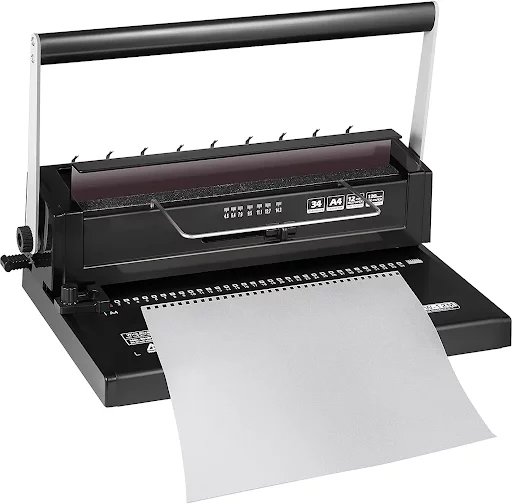Binding machines are an essential tool for businesses, schools, and individuals who need to create professional-looking documents. These machines use a plastic or metal coil to bind pages together, creating a durable and secure binding that allows pages to lay flat when open. Choosing the right coil binding machine is important to ensure that your documents look professional and hold up to frequent use. In this article, we will discuss the main factors to consider when choosing the right coil binding machine for your needs.
Types of Coil Binding Machine
There are several different types of coil binding machines, each with special characteristics and capabilities. Manual, electric, and fully automated coil binding machines are the three main types of coil binding equipment.
Manual Coil Binding Machine:
Users of manual coil binding machines must manually punch the paper’s holes and put the coil into the paper. These reasonably priced devices are excellent for quick binding jobs. However, they could take a while, especially if you’re dealing with a lot of paper.
Electric Coil Binding Machine:
Users still need to manually put the coils into the holes when using electric coil binding devices because they automate the punching procedure. These devices are better for medium-sized binding jobs and faster than hand coil binding machines. They are also simple to use and reasonably priced.
Fully Automated Binding Machine:
The most cutting-edge coil binding machines are those that are fully automated. These devices can automatically punch the holes, insert the coil, and crimp the edges. In general, they are quicker than both manual and electric coil binding machines, making them perfect for large-scale binding operations. They are, however, also more expensive than other kinds.
Binding Capacity And Sheet Size:
Binding capacity and sheet size are important considerations when picking a binding machine like coil binding or comb binding. While sheet size refers to the largest size of paper the machine can handle, binding capacity refers to the maximum number of pages the machine can bind. It’s critical to pick a binding machine whose binding capacity matches your requirements and whose sheet size accepts the largest paper size you intend to bind. It’s also crucial to confirm that the device can create the number of holes required for your particular project. Make sure the coil binding machine you select has the correct binding capacity and sheet size by taking into account the types of papers you will be binding.
Punching Capacity And Hole Pattern:
When choosing a coil binding machine, punching capacity and hole pattern are crucial considerations. The number of sheets that can be punched at once is referred to as punching capacity, and it’s crucial to pick a machine whose punching capacity matches your requirements. A punching machine with a bigger punching capacity is appropriate if you routinely bind huge documents.
The arrangement of holes that the machine punches into the paper is referred to as the “hole pattern.” In terms of the number of holes per inch, the majority of coil binding machines offer either a 4:1 or a 5:1 hole design. Selecting the appropriate hole pattern for the size of coil you intend to utilize is crucial. With coils up to 1 inch in diameter, a 4:1 hole design is generally utilized and coils up to 2 inches in diameter, a 5:1 hole pattern.
